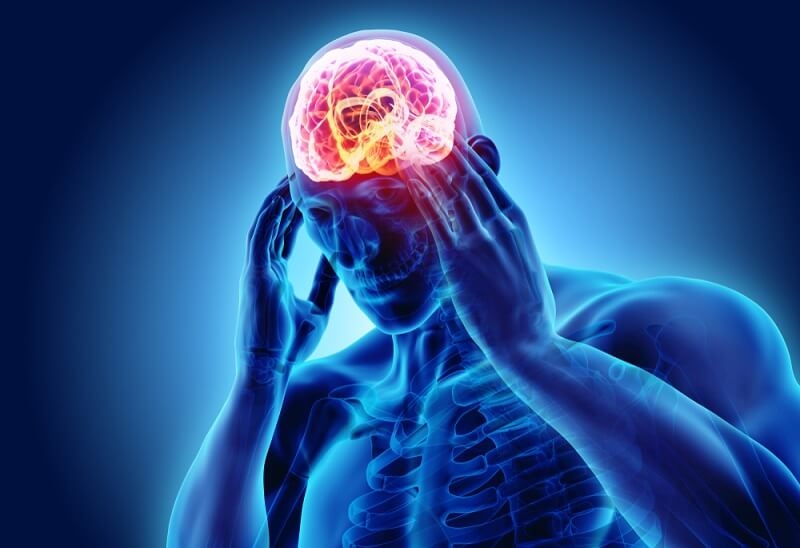Migraine or Headache: Differentiating The Pain Sources

Do you have a pounding headache, or is it a migraine? Many people mistake a migraine for a headache and vice versa. Its essential to identify the source of your pain so you can find the best treatment. Migraines or headaches are among the most common health complaints worldwide, affecting millions of people from all walks of life. Despite their prevalence, they can be remarkably complex and elusive, causing many symptoms and triggers. Lets shed light on the intricacies of Migraines or headaches, providing valuable insights into their causes, types, and signs.
What Is a Migraine?
A migraine is a specific and often severe headache characterized by intense, throbbing pain, typically on one side of the head. It is a neurological condition that can be accompanied by a range of symptoms, including nausea, vomiting, sensitivity to light (photophobia), sound (phonophobia), and visual disturbances known as auras in some cases. Migraines are more than just a headache; they are a complex neurological disorder that can significantly impact a person's daily life. Unlike a typical headache, a migraine is a distinct and recurring neurological event with unique characteristics. It usually requires specific treatment and management strategies tailored to the individual.
What Is a Headache?
A headache is a sensation of pain or discomfort in the head, typically involving the forehead, temples, or the back of the neck. It is a common health issue experienced by people of all ages and backgrounds. Headaches can vary in intensity, ranging from mild, nagging discomfort to severe, throbbing pain. Various factors, including stress, tension, dehydration, sinus congestion, or underlying medical conditions, may cause them. While the specific sensations and triggers can differ from person to person, headaches are generally characterized by localized or diffuse head pain that can be a temporary inconvenience or, in some cases, a recurring condition.
What Are the Symptoms of a Headache?

The symptoms of a headache can vary depending on the type and cause. Common symptoms include:
- Aching or throbbing pain in the head, neck, or face
- Sensitivity to light
- Blurry vision
- Nausea
- Difficulty concentrating
- Fatigue
- Dizziness
- Mood changes
What Are the Symptoms of a Migraine?
A wide range of symptoms can accompany migraines. These include:
- More Severe pain on one or both sides of the head
- Nausea
- Vomiting
- Sensitivity to light, sound, and smells
- Blurred vision
- Dizziness
- Fatigue
- Mood changes
- Difficulty concentrating
What Are the Different Types of Migraine?
There are several types of migraine. These include:
Migraine with aura: This type of migraine is accompanied by visual or neurological symptoms, such as blind spots, flashing lights, or tingling sensations.
Migraine without aura: This type of migraine has no visual or neurological symptoms.
Chronic migraine: This type of migraine occurs more than 15 days per month for over three months.
Hemiplegic migraine: This is a rare type of migraine accompanied by temporary paralysis on one side of the body.
What Are the Different Types of Headache?
There are several types of headaches. These include:
Tension headache: This is the most common type of headache. It is usually described as a dull, aching head, neck, or face pain.
Cluster headache: This is a rare type of headache that usually occurs in clusters. It is characterized by severe pain on one side of the head, accompanied by redness in the eyes and a runny nose.
Sinus headache: This type of headache is caused by inflammation of the sinuses. A stuffy nose, facial pressure, and pain in the forehead, cheeks, or around the eyes usually accompany it.
How Is a Migraine Diagnosed?

Diagnosing migraines or headaches involves a thorough assessment by a healthcare professional. During your appointment, your doctor will ask detailed questions about your symptoms, including the nature of your headaches, frequency duration, and any associated symptoms like nausea or visual disturbances. It's crucial to provide a comprehensive medical history, including any family history of migraines or headaches, as this can be a significant factor.
To rule out other potential causes of your symptoms, your doctor may recommend diagnostic tests, such as a CT scan or MRI. These imaging studies can help identify structural abnormalities or other conditions that mimic migraine or headache symptoms. While no specific test definitively confirms a migraine or headache diagnosis, these scans are essential in ensuring there are no underlying issues.
How Is a Headache Diagnosed?
Diagnosing a headache follows a similar process to diagnosing migraines. Your doctor will begin by discussing your symptoms and medical history. It's essential to provide as much detail as possible about your headaches, including their frequency, location, and any associated factors or triggers. Diagnostic tests like CT scans or MRIs may be ordered like migraines to exclude other potential causes.
Sometimes, blood tests or other specialized evaluations may be necessary to determine if an underlying medical condition contributes to your headaches. A precise diagnosis is crucial because it will guide the most appropriate treatment plan.
How Are Migraines or Headaches Treated?
Migraine or headache treatment strategies are tailored to the individual and may encompass various approaches:
Medications: Depending on the severity and frequency of your migraines or headaches, your doctor may recommend different medications. Over-the-counter pain relievers like ibuprofen or acetaminophen can provide relief for mild episodes. Medications such as triptans may be prescribed for more severe migraines or headaches. These drugs are designed to target migraine or headache-specific pathways and can help alleviate symptoms.
Lifestyle Changes: Lifestyle modifications are essential for managing migraines or headaches. Identifying and avoiding triggers can significantly reduce the frequency and intensity of migraines or headaches. Maintaining a regular sleep pattern, staying hydrated, and managing stress through relaxation techniques are crucial to migraine or headache management.
Treating Underlying Causes: If your migraines or headaches are associated with an underlying medical condition, your doctor will focus on treating that condition. Managing your blood pressure effectively becomes a priority if high blood pressure contributes to your migraines or headaches.
When to See a Doctor?

If you experience recurring, severe, or unusual Migraines or headaches, it's essential to consult a healthcare professional. Here are some specific situations when you should consider seeking medical attention:
- Frequent and Debilitating Pain: If you have Migraines or headaches that occur frequently and disrupt your daily life, it's crucial to see a doctor. Frequent Migraines or headaches may require a more comprehensive evaluation and treatment plan.
- Sudden and Severe Onset: If you experience a sudden and extremely severe headache, often described as the "worst headache of your life," this could be a sign of a medical emergency. Seek immediate medical attention as it could indicate a serious condition such as a brain hemorrhage or stroke.
- New or Different Symptoms: Any changes in your Migraine or headache symptoms, such as the addition of neurological symptoms, vision problems, or altered consciousness, should prompt a visit to a healthcare provider.
- Lack of Response to Over-the-Counter Medications: If over-the-counter pain relievers do not provide relief for your Migraines or headaches, a doctor can prescribe more effective medications and explore potential underlying causes.
- Migraines or Headaches with Unusual Triggers: If you're unsure about the triggers of your Migraines or headaches, a doctor can help identify them and provide guidance on managing and avoiding these triggers.
Conclusion
Distinguishing between migraines and headaches is vital for proper diagnosis and treatment. While both can cause head pain, migraines are often more severe and have additional symptoms. If you experience frequent or severe head pain, consult a healthcare professional to determine the underlying cause and develop a personalized treatment plan tailored to your needs. Remember that Migraines or headaches can be managed effectively with the right approach, allowing you to regain control of your life and reduce the impact of these painful episodes.
This content was created by AI
-1717753922-r.jpg)